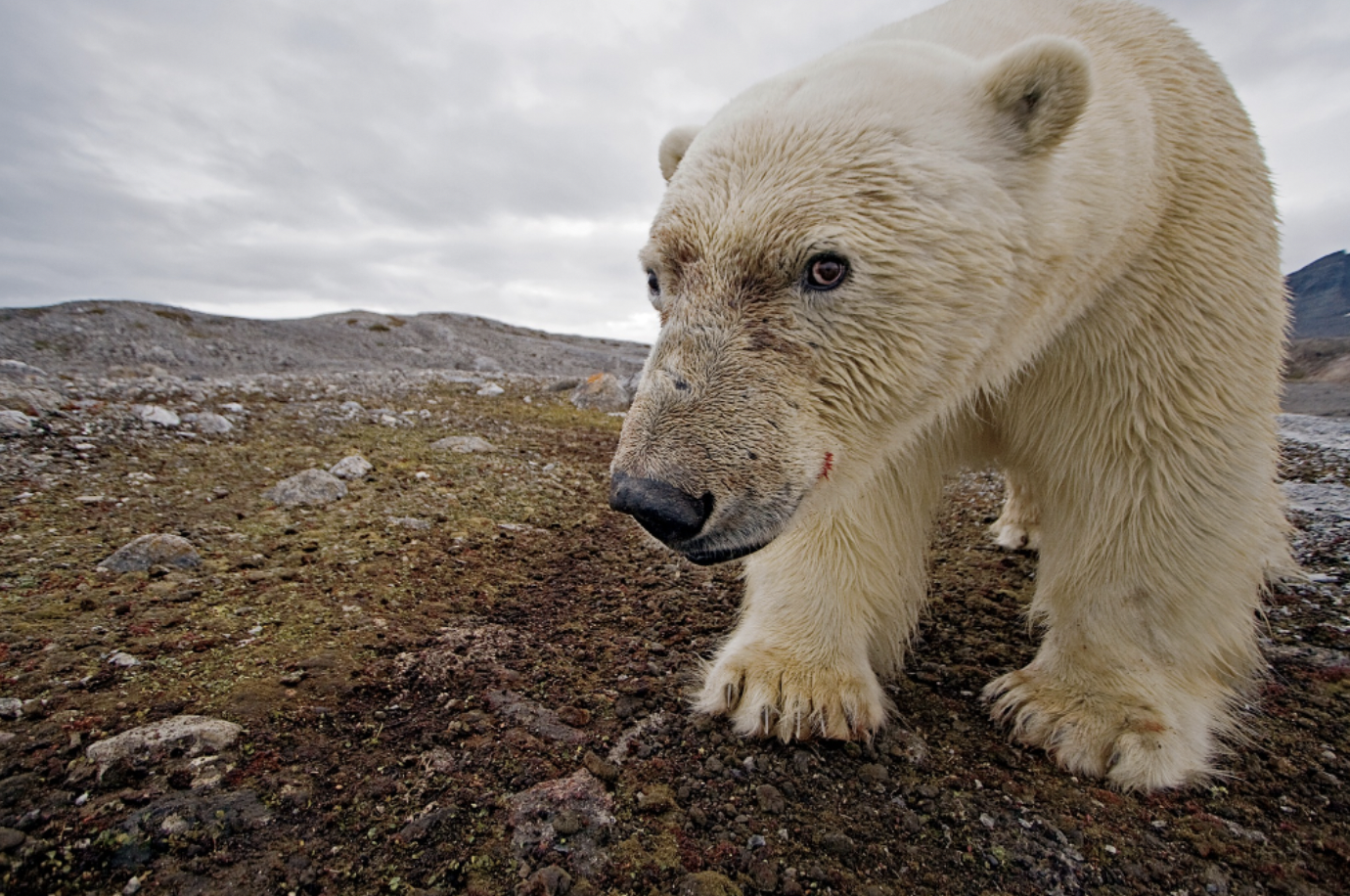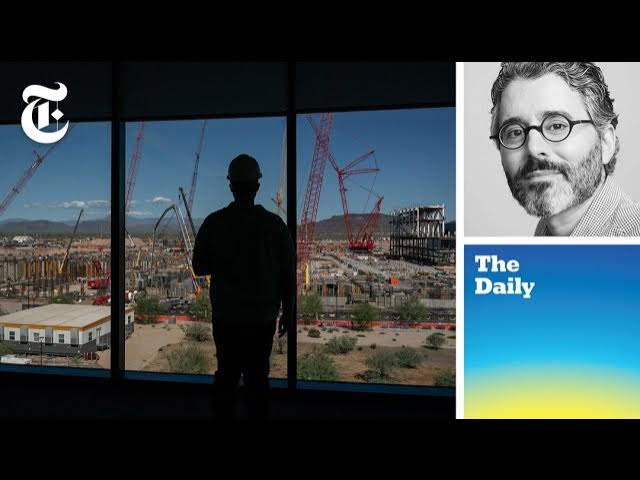
Dr. Sanjay Gupta’s Top Health Stories of 2025
From the resurgence of measles to a new way to treat pain, 2025 was a challenge for public health while still offering moments of hope. Sanjay…
Thought Leader: Sanjay Gupta

Large, totemic predators have always shared the landscape with humans. They are the reference point with which we evolved as a species, and I have devoted my entire career to studying them and sharing what I have learned with the outside world, in the hope that we may find a way to coexist in an increasingly uncertain future.
Last week, I started to share with you my story of an unwanted polar bear encounter that changed the way I view the Arctic’s most powerful, mercurial apex predator. Every once in a while, one experiences a cautionary moment that shakes one to the core, a teachable moment that stays with one for the rest of your life. This was one such moment.
Early in my career as a field biologist, I worked alongside a team of scientists and professional polar bear guides on the sea ice to document polar bear populations. The lead guide used a pair of huskies to help our research team track and monitor polar bears in the wild. These huskies were bred and trained to stop polar bears from running and becoming overheated during our tracking for research. I was fond of the huskies, so I spoiled them with treats, food and frequent pets and hugs. The Inuit guides advised me to treat the huskies as they did, as work dogs, but I was a novice when it came to working with huskies accustomed to polar bears and I kept spoiling them.
I should have listened, of course, because the Inuit have an innate, almost instinctive sense of what to do and what not to do around large predators. There are grim realities that can be consigned to the back of the mind but never forgotten.
I was about to be reminded of that in a stark, sobering way. While tracking a polar bear one day, the bear caught the huskies off guard, whirled around and mauled one of the huskies, catching its leg. As soon as the huskies realized they were in trouble, they darted behind me for protection. In a blink of an eye, I had a 600-pound polar bear charging 20 miles an hour toward me, while the two huskies cowered inches behind my legs. In a blink of an eye, without a moment’s hesitation, I jumped on my snowmobile, gunned the engine and took off, with the huskies in tow. We escaped unscathed. The story could just as easily had a different ending — and it would have been my fault.
I had learned a valuable lesson, and it was only by the grace of luck that no one was hurt.
These apex predators are magnificent beauties, but they are wild animals that need to be treated with the utmost respect, and at a proper distance — always.
Polar bears invariably make a larger-than-life impression on anyone who sees one, whether in person or virtually, and because of that they have become the poster child for the entire climate change conservation movement. Without immediate action, scientists predict we could lose all but a few polar bear populations by the end of the century.
Over the course of my career, I have documented threats polar bears face in the wild. I like to think my work has helped amplify discussions about conservation and the need to protect and preserve their natural habitat, and yet these ice giants face an uncertain future, as do we all. When predator populations become threatened or endangered, it is a signal that the entire ecosystem is in trouble, and we ignore that at our peril. The loss of one species triggers the loss of other species within that ecosphere, and once the process begins, it is hard to stop, let alone reverse.
The Arctic is warming at a rate faster than anywhere else on Earth, and much of that is human-caused. Polar bears are directly affected because of how they live and what they need to survive in a harsh, unforgiving environment. Sea ice provides polar bears with a platform on which to hunt seals, the food most critical to their survival.
The calories from seals’ nutrient-rich fat sustain polar bears through the dark, cold winter months. Those calories play a crucial role in mother bears’ ability to nurse and raise their cubs in winter ice dens, where mother bears hibernate.
Sea ice conditions in the Arctic vary from year to year, depending on weather patterns and variability in the climate. Not every year sets a new record.
However, evidence collected by satellites over the long term indicates that human-caused climate change will continue to warm the atmosphere across the Arctic for the foreseeable future. A 2021 survey by the US National Snow and Ice Data Centre (NSIDC) shows that the amount of old, thick sea ice in the Arctic is at its lowest level since satellite records began. The Arctic is a very different place today than it was in the 1980s and 1990s when I witnessed the changes firsthand.
Climate change is not the only challenge. Other factors include commercial development, conflicts with people, pollution, disease, and the over-harvesting of declining polar bear populations where trophy hunting is allowed.
In Canada, home to 60% of the world’s remaining polar bears, scientists in the Hudson Bay area have determined that declines in local polar bear populations are directly related to longer, warmer summers. The ice forms later in the year and breaks up earlier the following spring.
It is our responsibility to this planet and its inhabitants to open our eyes to the natural beauty surrounding us every waking moment of every day. I have been privileged to experience natural wonders throughout the world, and one issue remains constant. Humans continue to engage in irrational and destructive behavior that harms the planet, the wildlife and, in the end, we ourselves. There is a deep tragedy in this shortsightedness. With each passing moment, we are living on borrowed time — time borrowed from our future and that of our children and grandchildren.
As I noted in last week’s Bulletin, the International Union of Conservation for Nature lists the polar bear as “vulnerable” on its official Red List of threatened species, the strict definition of which is that the species’ population is decreasing.
This listing is not urgent enough in my view. The polar bear must be upgraded to “endangered,” which means it faces “a very high risk of extinction in the wild.”
As with any apex predator, polar bears are a reminder of where we have stood in the food chain — and the cycle of life — for tens of thousands of years, not just in the High Arctic but on Earth in its entirety.
Dr. Sanjay Gupta’s Top Health Stories of 2025
From the resurgence of measles to a new way to treat pain, 2025 was a challenge for public health while still offering moments of hope. Sanjay…
Thought Leader: Sanjay Gupta
Ian Bremmer: The state of global conflict in 2025
On GZERO World, Ian Bremmer takes a hard look at the biggest global crises and conflicts that defined our world in 2025 with CNN’s Clarissa…
Thought Leader: Ian Bremmer
Peter Goodman: The Messy Reality of ‘Made in America’
The construction of a giant factory complex in Arizona was supposed to embody the Trump administration’s ability to bring manufacturing back to the United States.…
Thought Leader: Peter Goodman

